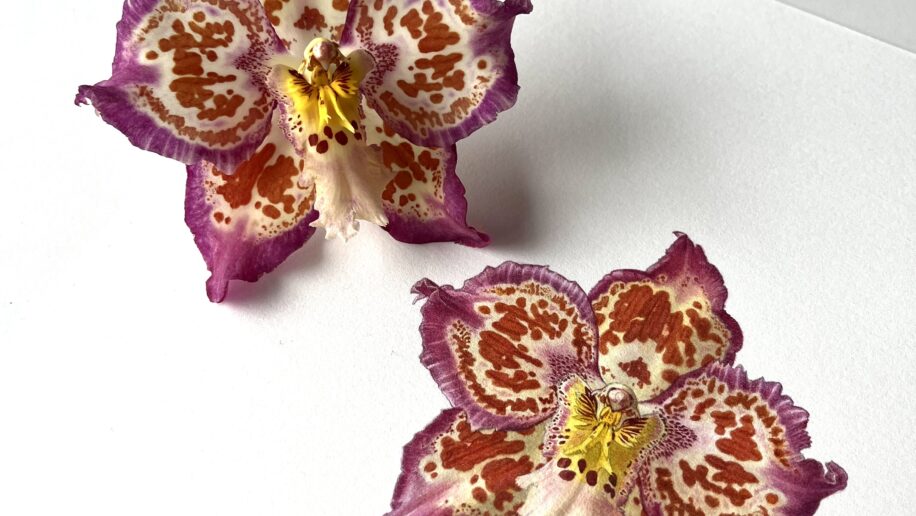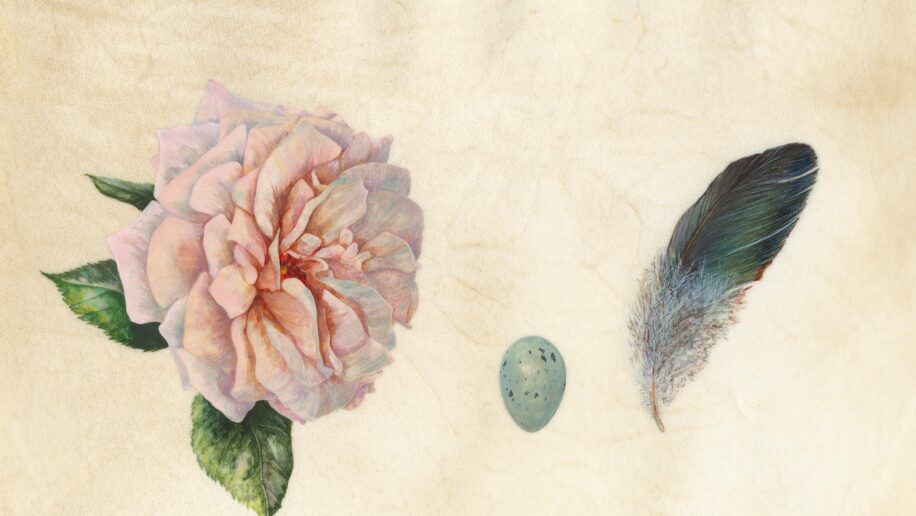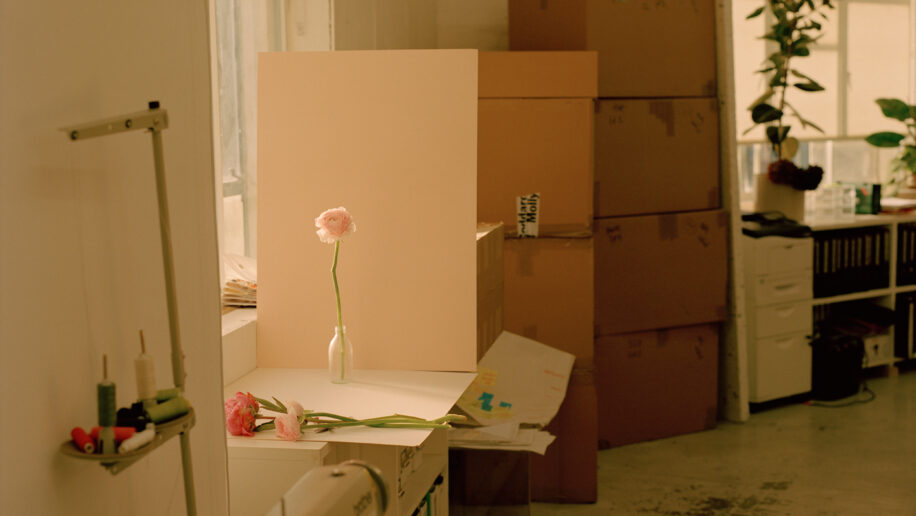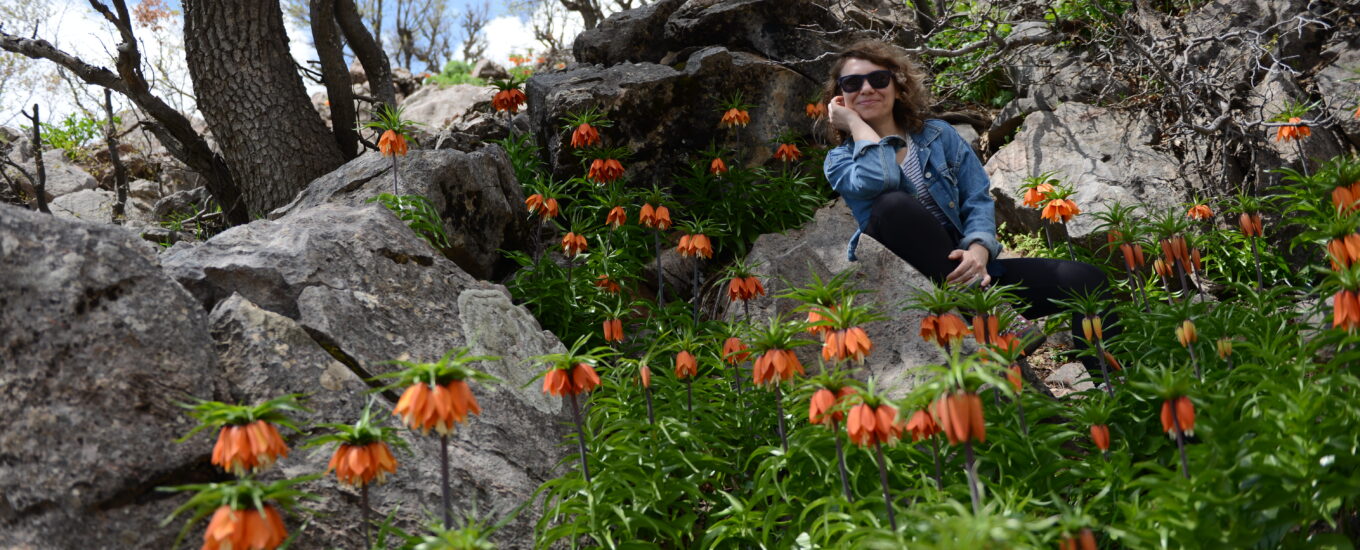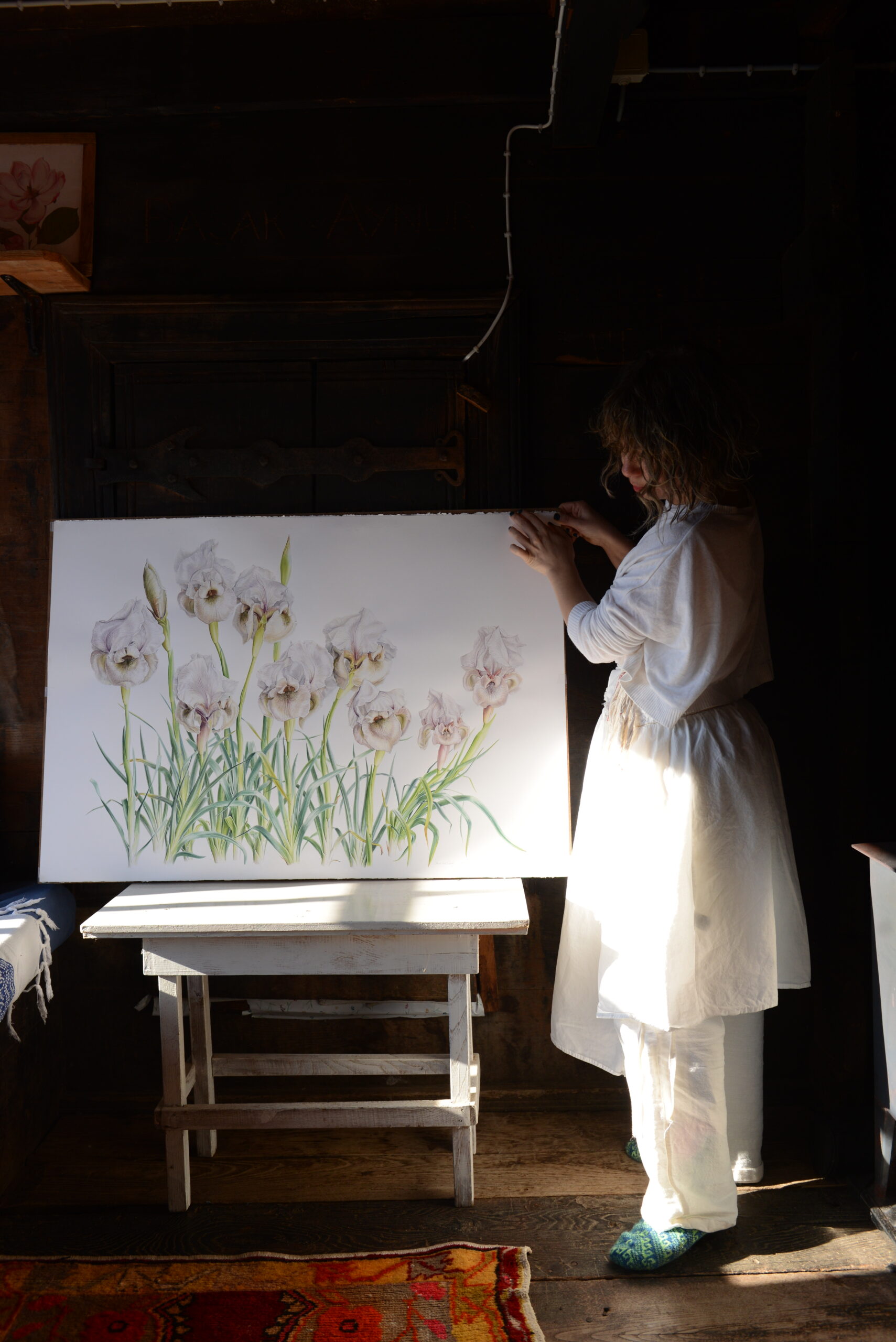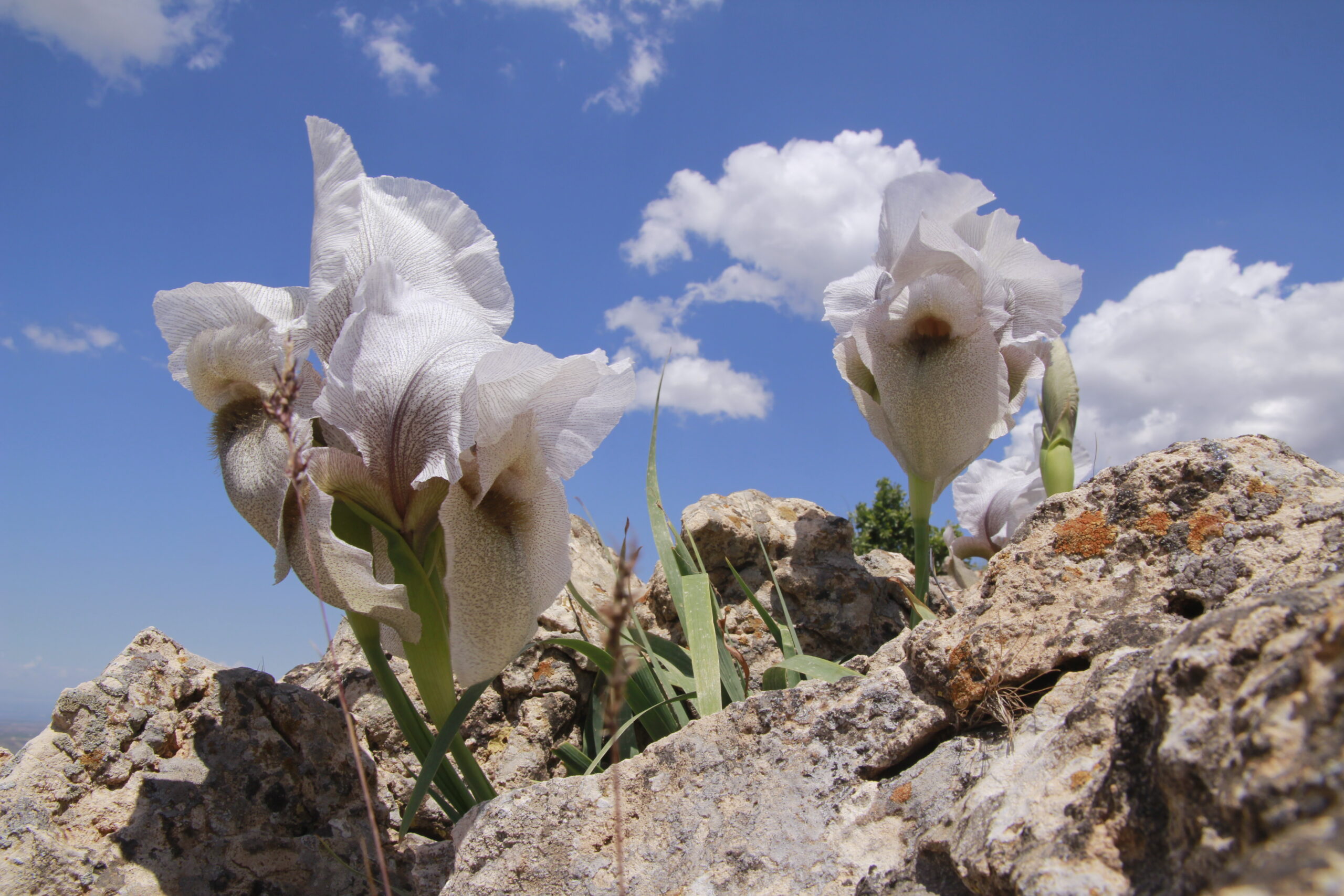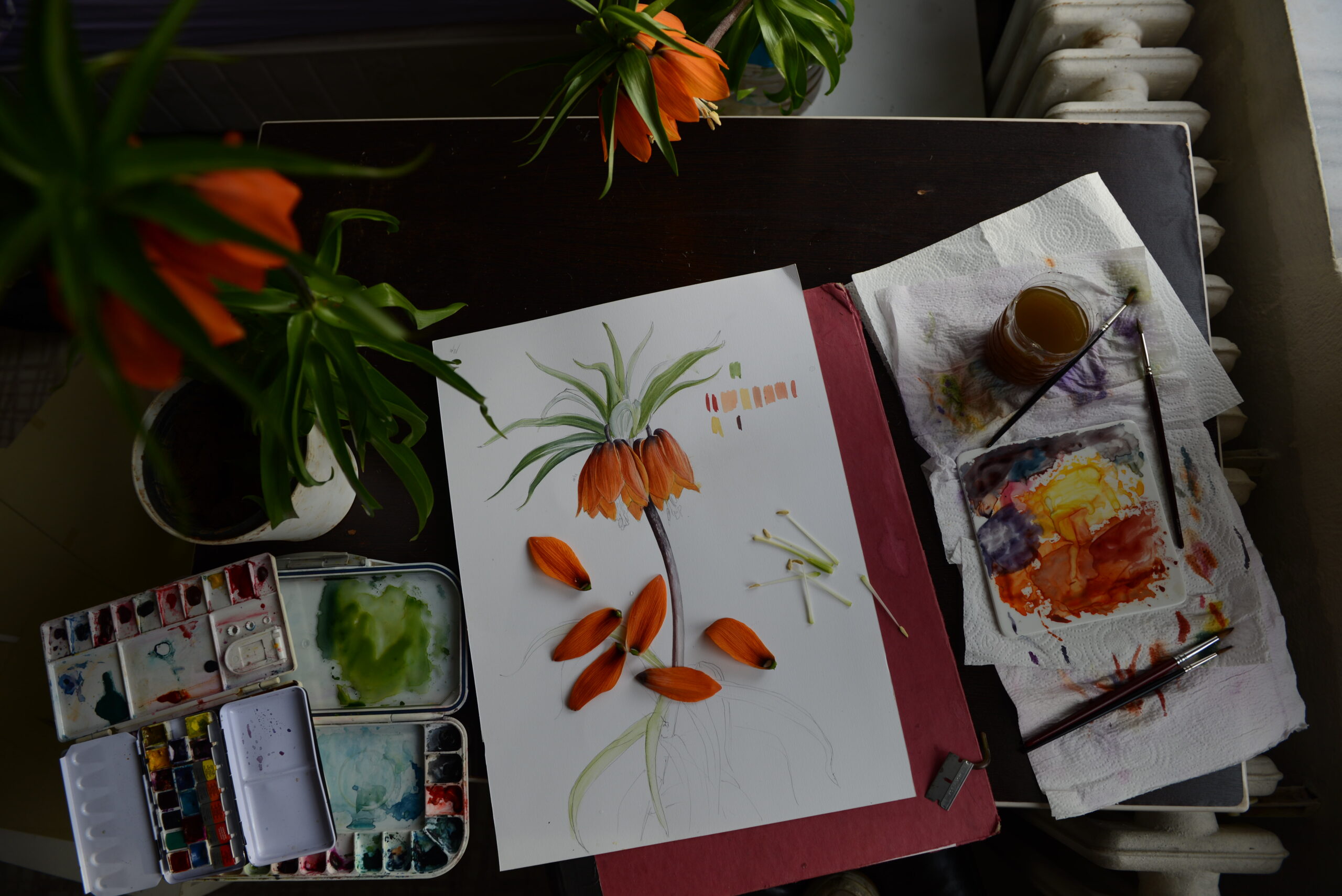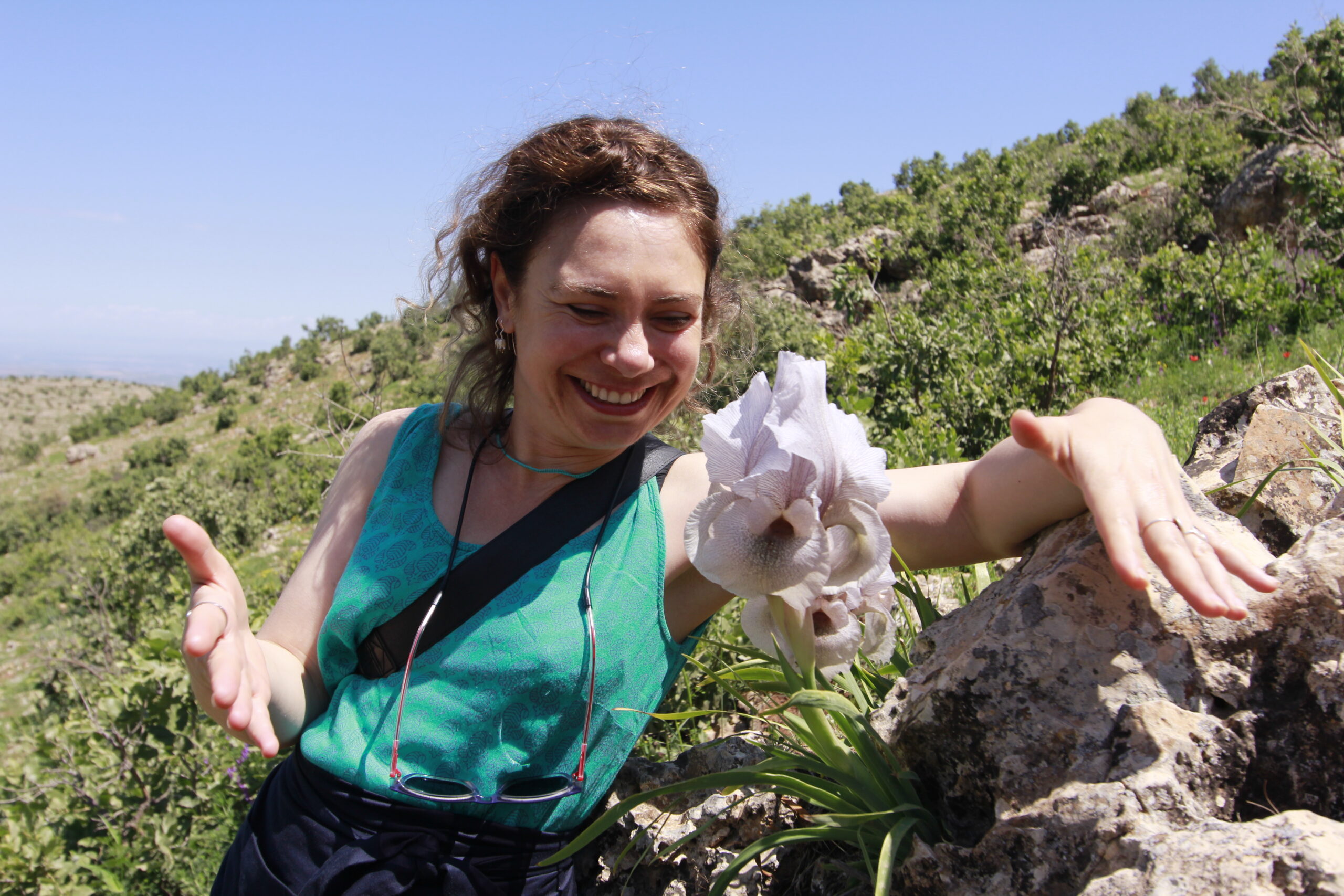This year, I broadened my purpose — to paint not just the Sason iris, but also the imperial fritillary. But nature has its own rhythm. While Fritillaria imperialis blooms in April, Iris gatesii waits until mid-May. It meant either two separate journeys or one long, uncertain one.
When the fritillaries began to bloom, together with botanist Aşkın Öykü Çimen, I returned to Sason. Yet, as soon as we arrived, we learned that Mount Halkis had been restricted for security reasons. Once again, the I. gatesii was beyond reach. But the fritillaries — they were everywhere. Climbing the red hills, we found slopes covered in blazing clusters of red, orange, and yellow. It was overwhelming, almost unreal. Among them, I began to imagine my composition: not a single flower, but a living cluster, just as they stood in the wild — vivid, abundant, and full of life.
Later, I continued my search in Mardin, where Iris gatesii blooms a little earlier, not in cluster but in small areas. When I searched these locations in Mardin, finally I have found a bud! But days turned into weeks, and still, the buds refused to open. I stayed, waited, and kept going back to these locations, again and again – but nothing. Patience, once again, was the lesson.
No species had ever tested me — financially, emotionally, and spiritually — as much as this one. But I couldn’t give up. I didn’t have the strength to wait another year, nor could I stay in Mardin endlessly, so I returned home with the firm decision to come back in a couple of weeks.
By mid-May, I was back on the road to Mardin — this time, alone. It would be just me and the Sason iris and I was already impatient. As soon as I arrived, I went straight to the locations I knew by heart from previous visits. This time I widened my search and climbed higher. Hopping across the rocky slopes, I reached a plateau — and that’s when I screamed.
